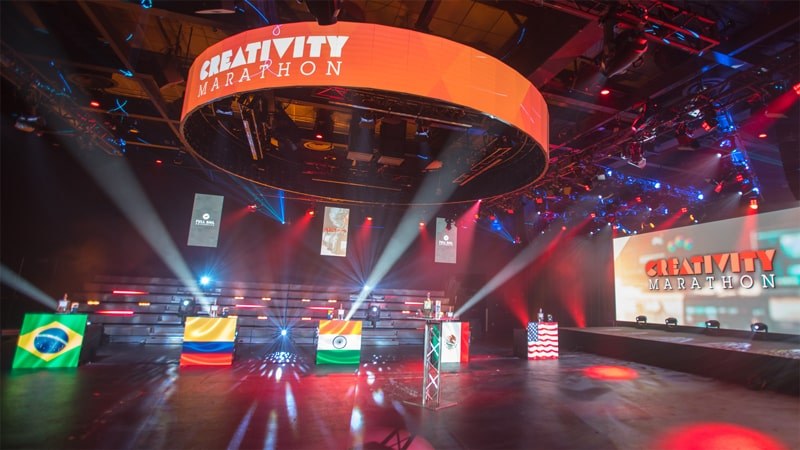Pro Advice
Five Innovative Uses of Color in Film
Recently, we did a blog post about the dramatic uses of lighting in film. Scenes that are starkly lit, show characters in shadow, or involve shafts of light are all techniques directors and cinematographers use to tell a story. Incorporating color into films – through lighting, but also through props, costuming, and set design – is another way to evoke emotion, add symbolism, and convey meaning. These choices involve not only the director and cinematographer, but also the art director.
“Every design decision you make has to be integrated back with the script,” says Dustin Lee, Course Director for Storytelling within Digital Cinematography. “It can’t be because it looks good – it has to be tied somehow symbolically, thematically, with what’s going on with the script itself.”
Like dramatic lighting, color can be highly symbolic, yet modern filmmakers often rely on camera angles and movement more than color and set design to communicate with the audience, says Lee.
“A lot of times color is kind of overlooked, and some of that is because it’s subjective,” says Jennifer Miller, who teaches Project Planning & Development and Producing Independent Film. However, there are some great cinematic examples of art direction with color, she adds.
Here are five films that masterfully use color to tell the story, say Lee and Miller:
Run Lola Run – Red and yellow figure prominently in this German film, directed by Tom Tykwer. The main character, Lola, is often surrounded by red and has fiery red hair. “She’s a passionate person, and she’s in love, so you’ve got the traditional symbolism from the color red and how it plays out there,” says Lee. Red is also used in props and scenery to indicate a warning or emergency, as in red signs, red cars, a red phone, and a red plastic bag in a grocery store scene where Lola and her boyfriend try to rob a store. “So you have red symbolizing vitality, life – and sometimes death, intensity, and passion,” says Lee. On the other hand, Lola’s boyfriend’s color is yellow. Some examples are a phone booth, a train, and clothing. “He’s in danger basically,” says Lee.
Moulin Rouge! – Directed by Baz Luhrmann, Moulin Rouge is saturated with color in its lighting, costuming, and sets. Reds, purples, and golds figure prominently in the nightclub scenes, indicating riches and power. When the main characters walk through the poorer sections of Paris, the rich colors fade to shadowy blues. “In both The Great Gatsby and Moulin Rouge, [Luhrmann’s] kind of creating a fantasy world, the look of that spectacle,” says Miller. “He’s really using the color intentionally like that to remove us from reality, to put us in this other place. It’s kind of transporting us. When you do see those more muted, more melancholy colors, it’s really when the characters are outside of that world.”
Sleepy Hollow – Some directors have distinct color palettes, and Tim Burton loves blues and grays, says Lee. In Sleepy Hollow, as in many of his other films, blue indicates melancholy and death. In the film, shades of blue show up in lighting, costuming, and props. “There’s only one scene where the color green becomes more prominent than the color blue,” says Lee. And that scene involves financiers and money. “It’s a very subtle change if you’re not focused on it – it’s got to be something that’s working on the subconscious level,” says Lee.
Vertigo – People often overlook Alfred Hitchcock’s symbolic use of color because many of his films were in black and white, says Miller. Yet Hitchcock put a lot of stock into how our culture would interpret color when it came to his color films – like Vertigo. “He’s kind of known to be very, very involved in the pre-production process. He liked to have everything planned to the last detail,” says Miller. “He would tell his wardrobe stylist what colors the characters were going to wear.”
In Vertigo, red is connected to the character Madeleine. When she first appears in the film, she is surrounded by the color red, says Miller. Later, when the main character rescues her, she is wearing a red robe. “The symbol is that the red represents danger and a warning for the audience. We don’t find out until later the character’s true intentions. She isn’t who we believe her to be,” says Miller. “Hitchcock said that for him, red actually represents a scream.”
Pleasantville – Although much of the color infusion in Pleasantville takes place in post-production, the use of color in this film is also highly symbolic. The film involves two ‘90s teens who find themselves trapped in a 1950s, black and white sitcom – and start to shake up this world’s staid, straitlaced characters. “Some characters are staying black and white, and they represent the more traditional values,” says Miller. “When the characters are changing to color, they’re representing the more modern, progressive [ideas].” Color also represents shame, fear of change, and loss of innocence, she says.
Ultimately, all of these films use color – like sound or lighting – as just another technique to reach the audience, often subconsciously. “The key to good storytelling is you have to come up with something that’s primal,” says Lee. “If it doesn’t touch a nerve, you’ve missed it, you’ve missed the boat. You’re not going to get the impassioned response.”
Whether you’re ready to apply or just want to learn more about Full Sail University, our Admissions Representatives are here to help. Call us or request more information.
Keep Exploring
- Course Info
- What's Your Job?
- Game Development
- Campus
- Admissions
- Sportscasting
- Sports Marketing & Media
- International
- Image Gallery
- Digital Arts & Design
- Games
- City Guides
- Student Work
- Computer Science
- Mentorship
- Before You Start
- Course Stacks
- Degree Info
- Simulation & Visualization
- Music Business
- Tuition

